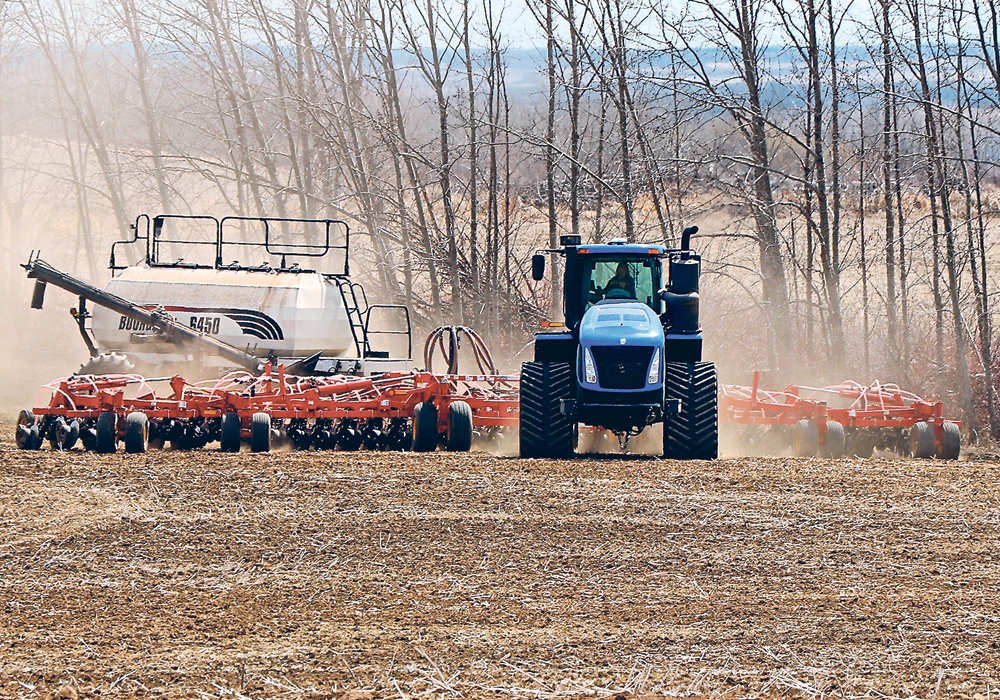SASKATOON — Three provinces issued news releases expressing their displeasure with Ottawa’s fertilizer emissions reduction target, even as agriculture minister Marie-Claude Bibeau announced their agreement on a new policy framework last week.
Saskatchewan, Alberta and Ontario said they are disappointed the federal government is imposing targets when the world is struggling with food security and farmers are doing their best.
Saskatchewan minister David Marit said the 30-percent reduction by 2030 is set and any future consultation is only on how to meet it, not to determine what is achievable.
Read Also

Phosphate prices to remain high
Phosphate prices are expected to remain elevated, according to Mosaic’s president.
“As our farmers work to feed Canada and the world, we need to work with them and support their ongoing efforts to grow and produce the food we need. The federal government needs to be true partners, rather than simply imposing targets that make it harder,” said Lisa Thompson, Ontario’s minister of agriculture.
Farmers and stakeholders across the country have been talking for months about the target and how it might be achieved.
Bibeau said she knows farmers are doing a good job of greenhouse gas reduction but new technology could help them do better.
“I know how much they care for the environment,” she said during a news conference. “We have an emissions target, it’s true, and I want to make sure that everyone understands that the target is about reducing the emissions caused by fertilizer, not reducing fertilizer directly. The idea is to invest in research and innovation and I’m sure that we will find (through) new types of fertilizer, through better practices, through new technologies, ways to be even more sustainable.”
Bibeau said everyone involved is working toward producing the most sustainable food in the world.
Alberta agriculture minister Nate Horner said he and the producers he represents are frustrated with the process.
“The federal minister was clear that they’re still in a consultation phase but I would comment that there’s a lot of confusion out there and them starting with an arbitrary target and throwing that out there and then trying to work back, yeah, it frankly feels a little wrong,” he said in an interview. “We were clear to the federal minister about that. I think they need to communicate to producers across the country that they understand all the issues at play.”
Horner said farmers have and will continue to do their part to reduce emissions but they also have to increase production. He said a blanket cap is not the way to go.
“We really need to look at emissions per unit of production if they want to have a useful measure,” he said. “If we have the lowest emissions on a bushel of wheat, for example, that should really mean something.”
Marit also addressed emissions intensity, or per unit of crop, and said Ottawa doesn’t recognize what farmers are already doing.
“We’re already doing everything we possibly can,” he said in an interview. “Obviously we don’t want to be jeopardizing productivity. You look at the 4Rs (nutrient stewardship program) and the participation we have in Saskatchewan under that and the good work we’re doing there.”
He said research and innovation would help farmers increase production while reducing emissions without cutting fertilizer use, but his proposal to continue on that path in the absence of a target was rejected.
Thompson added that farmers are dealing with complex issues and she hoped the federal government would support and recognize the responsible stewardship they show. She said ministers were able to reach agreement on other issues and should be able to “find an approach on fertilizer that will not negatively impact yields and food security.”
















